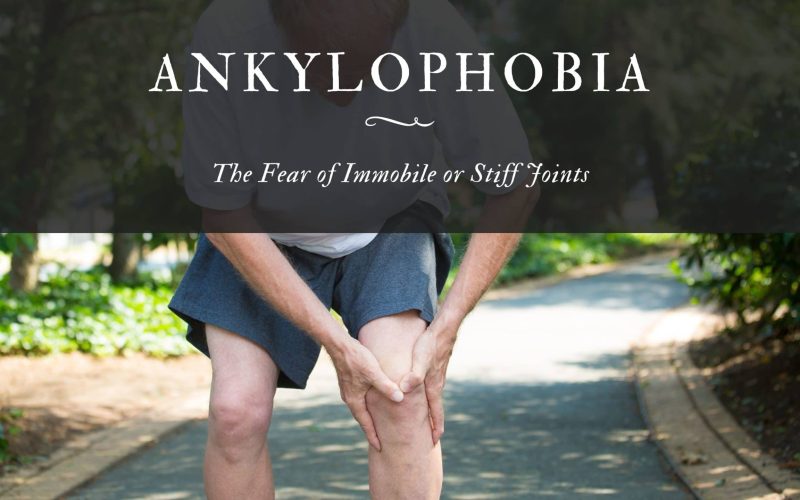Have you ever heard about ankylophobia? If you haven’t, you’d be thrilled to know that ankylophobia is the irrational fear of immobile or stiff joints.
Ankylophobia is a word of Greek origin and is a combination of the 2 different Greek words, ankylo (meaning stiff or unmovable) and phobia (meaning fear).
Ankylophobia is not the most common phobia, and it is considered a specific phobia.
Causes of Ankylophobia
It is a generally accepted fact that almost all phobias arise from a combination of different external events (such as traumatic events) and some internal predispositions (such as genetics or heredity).
Many specific phobias such as this one can be traced back to a particular triggering event, often something traumatic that occurred at an early age.
Also worthy of note is that social phobias and agoraphobia feature more complex causes that are yet 50 be known entirely at this time.
It is believed that genetics, heredity, brain chemistry, and life experiences now play a significant role in forming phobias.
Symptoms of Ankylophobia
As with all known phobias, the symptoms vary per person depending on how intense their level of fear has become.
The most common symptoms of phobias are trembling, chest pains, heart palpitations, elevated blood pressure, shortness of breath, inability to speak, dry mouth, upset stomach, nausea, and hot or cold flashes.
Phobias of all kinds are to be taken very seriously. If you have a phobia like ankylophobia, and it isn’t given proper treatment and attention, it may begin to limit the life of the sufferers.
In some cases, up to the point of depression and extreme anxiety.
Knowing how to manage anxiety and thoughts will not only be helpful for the promotion of better living but also to overcome the irrational fear of immobility of a stiff joint.
Not all the symptoms mentioned above may be experienced; even when you experience some of them, it may not be to the extent someone else does.
Treatment
Talking therapies or treatments, which may include counseling, may be very effective for the treatment of fear of immobility of a stiff joint ( Ankylophobia).
One reason why some people prefer talking therapies is that they are very laid-back methods of treatment and are never physically intrusive.
The treatment process only involves talking to a proficient and highly trained professional about your symptoms, feelings, thoughts, and behavior.
There are so many types of talking therapy that you can try, but all of them aim to:
- Help people recognize patterns that may be unhelpful or counterproductive in how they act or think and find ways to change them (if they wish to).
- Help people resolve feelings that may be complicated or help them find possible ways to live with these feelings.
- Help people make sense of things and also understand themselves better
- Give people a safe time and place to pour out their minds to someone who will not judge you
Cognitive Behavioral Therapy (CBT)
CBT treatment is another helpful method of treatment that stands on the concept that people’s thoughts and perceptions of things are continually influencing how they behave.
Experiencing distress and anxiety are, in some cases, bending and distorting one’s perception of reality.
Cognitive behavioral therapy aims to identify if they are a correct depiction of reality and, if not, seek out strategies to challenge and eventually overcome them.
For example, when a person is experiencing a fear of immobile or stiff joints (Ankylophobia).
Through the help of a few Cognitive behavioral therapy sessions, you can easily know if the anxiety and fear experienced from joint immobility is a correct depiction of reality.
And if it is not, work on easy ways to change that.
Medicine
Medicine may be prescribed during treatment, but please note that any prescribed medications are not for the treatment of this phobia.
Also, these medications can have side effects or withdrawal symptoms that may be severe.
It is also very important to note that drugs or medicines do not cure any form of phobias, and they can only temporarily suppress the systems at best.
Unfortunately, it is not uncommon for some people to turn to alcohol and illegal drugs for the treatment of their symptoms, which doesn’t also treat phobias.
Opting for such options can cause the user to form an addiction to these things.








